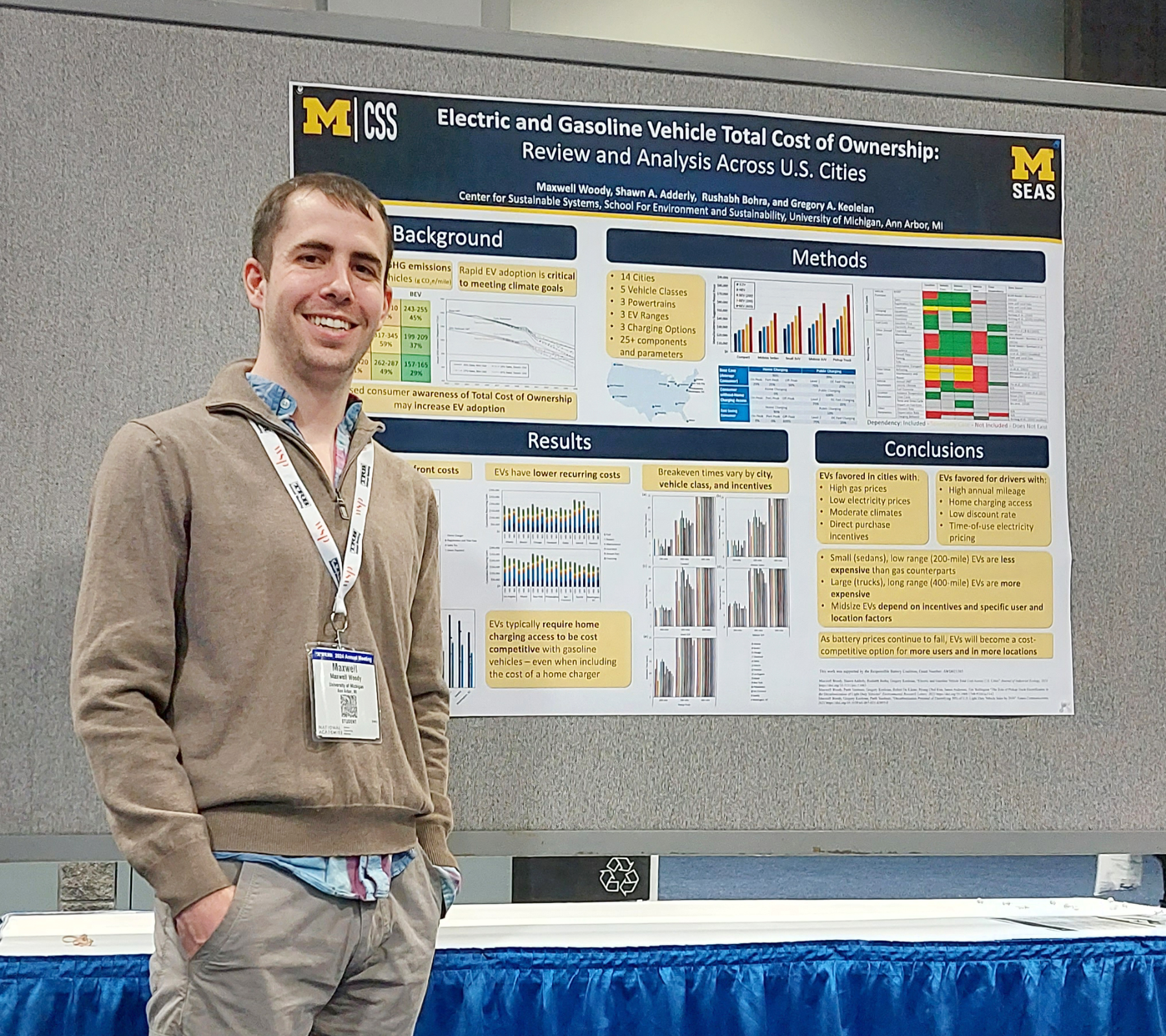2023 was the hottest year since the advent of global temperature record keeping in 1850. According to the National Oceanic and Atmospheric Administration (NOAA), it eclipsed the previous record holder, 2016, which itself exceeded the record set in 2015. In fact, the 10 hottest years in NOAA’s 174-year record all fall within the last decade, a trend its scientists attribute directly to human-made greenhouse gas emissions.
In response, the United States has set a target to reduce emissions by 50 percent from 2005 levels—the first year in the 21st century to set a global temperature record—by 2030. A transition to electric vehicles, or EVs, is seen by many as a key step toward meeting this goal, as transportation is the largest contributor to emissions. Transportation accounts for about 30 percent of emissions in the U.S. and one fifth of emissions globally. The U.S. government has set a concurrent goal of having EVs account for half of all new vehicles sold in the country by 2030.
In order to gain a better understanding of just how much electric vehicles may contribute to U.S. climate goals, Maxwell Woody (M.S. and M.S.E., ’20), a Ph.D. candidate in the U-M School for Environment and Sustainability and a researcher in the Center for Sustainable Systems, conducted investigations across multiple regions and cities in the U.S. to project how readily and quickly different regions of the country will be able to adopt this new type of vehicles.
“A lot of this work was motivated by the policies we’re seeing around EV adoption,” Woody says. “There are huge new incentives that were included in the Inflation Reduction Act, and many policies pushing them, and that got us thinking about how close that will get us to the big picture climate goals we’ve set.”
It’s a broad question, one Woody has divided and approached from two different angles, both focused on light duty vehicles, which are the farthest along in terms of electrification and are the most common consumer choice.
One Strategy Among Many
The first angle that Woody explored, published in November 2023 in Nature Communications, looked at variations in national and state-level EV adoption trends and projected EV sales, stock, and impact on emissions through the 2030 target and beyond.
“We had the exact 50 percent by 2030 EV sales target, we have data on our current levels of both emissions and EV adoption, so we were able to make an adoption curve in our computer model that gets us there,” Woody says.

Woody presented his findings at the 2024 annual meeting of the Transportation Research Board in Washington, D.C.
That took the form of an s-shaped logistic curve, which is commonly used for projecting the adoption of new technologies, and revealed a slow start that steadily sped up over time. Woody’s research further revealed that different states had different starting points, which made a significant impact in their projected level of EV adoption in the coming years.
“There was a lot of regional variation,” he explains. “In California, you’re likely to see well above 50 percent adoption, even coming close to 70 percent, by 2030, but in other places like North Dakota, you’re only seeing adoption in the mid-teens. There’s a huge spread across the country.”
The data projected that EV adoption would reduce greenhouse gas emissions of light duty vehicles by 25 percent by 2030, and by 45 percent by 2035.
“Simply put, we’re not going to reach our 50 percent emissions reduction goal by 2030 with EVs alone,” he says. “To get there we need to pursue other strategies, like decarbonizing our electric grid and investing in public transit. But at the same time we don’t want to downplay that reaching the EV goals does significantly reduce our emissions. Especially if we can lower some of the barriers to EV adoption, we can be on pace to meet our emissions goals by 2035.”
Addressing the Costs
The second study, published in the Journal of Industrial Ecology in January 2024, addressed the three key barriers to EV adoption. Woody explains them as the upfront cost of the vehicle, consumer anxiety over vehicle range limitations, and the availability—or lack thereof—of EV chargers.
“A lot of people have looked at the cost differences between electric and conventional vehicles,” Woody says. “We wanted to look at how use patterns and resource availability can impact that cost, and perhaps even mitigate it in some cases.”
Woody looked at a variety of factors in 14 U.S. cities, including gasoline prices, vehicle prices, insurance rates, and electricity rates, as well as several different scenarios with both publicly available and in-home EV chargers.
“We found that when you look at the total cost of ownership—everything that goes into owning, operating, and maintaining a vehicle—EVs are usually more expensive up front, but ultimately can be cheaper than a conventional vehicle depending on your specific case.”
His research revealed that EVs become significantly more cost effective in cities with higher gas prices, lower electricity rates, and for drivers with high annual mileage. The availability of in-home charging also makes a substantial impact, lowering the lifetime cost by between $10,000 and $26,000.
“The big picture motivation for a lot of my research is addressing climate change, and transportation is the biggest contributor to that in the United States,” Woody says. “It’s the place we need to start—it has tangible and immediate impacts. Our research lays out how far we have to go, but also shows it’s attainable and practical.”
How Rackham Helps
Woody is the recipient of Rackham Conference Travel Grants, which allowed him to attend and present his work at the annual meeting of the Transportation Research Board, a division of the National Academy of Sciences, Engineering, and Medicine, in Washington, D.C., in 2023 and 2024. Woody will also be the recipient of a Rackham One-Term Dissertation Fellowship in 2025.
“Rackham’s support has been instrumental in helping me share my research with a wider audience, amplifying the impact of that work,” he says.

